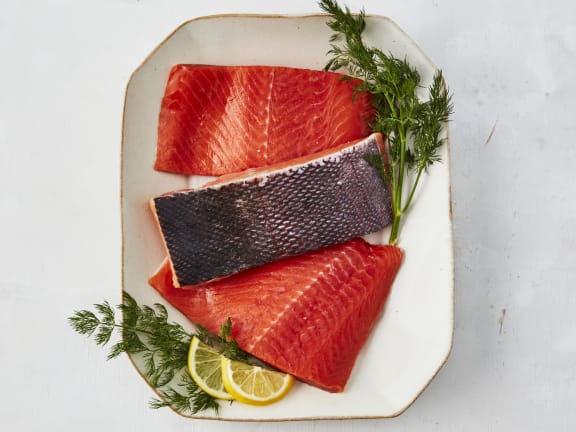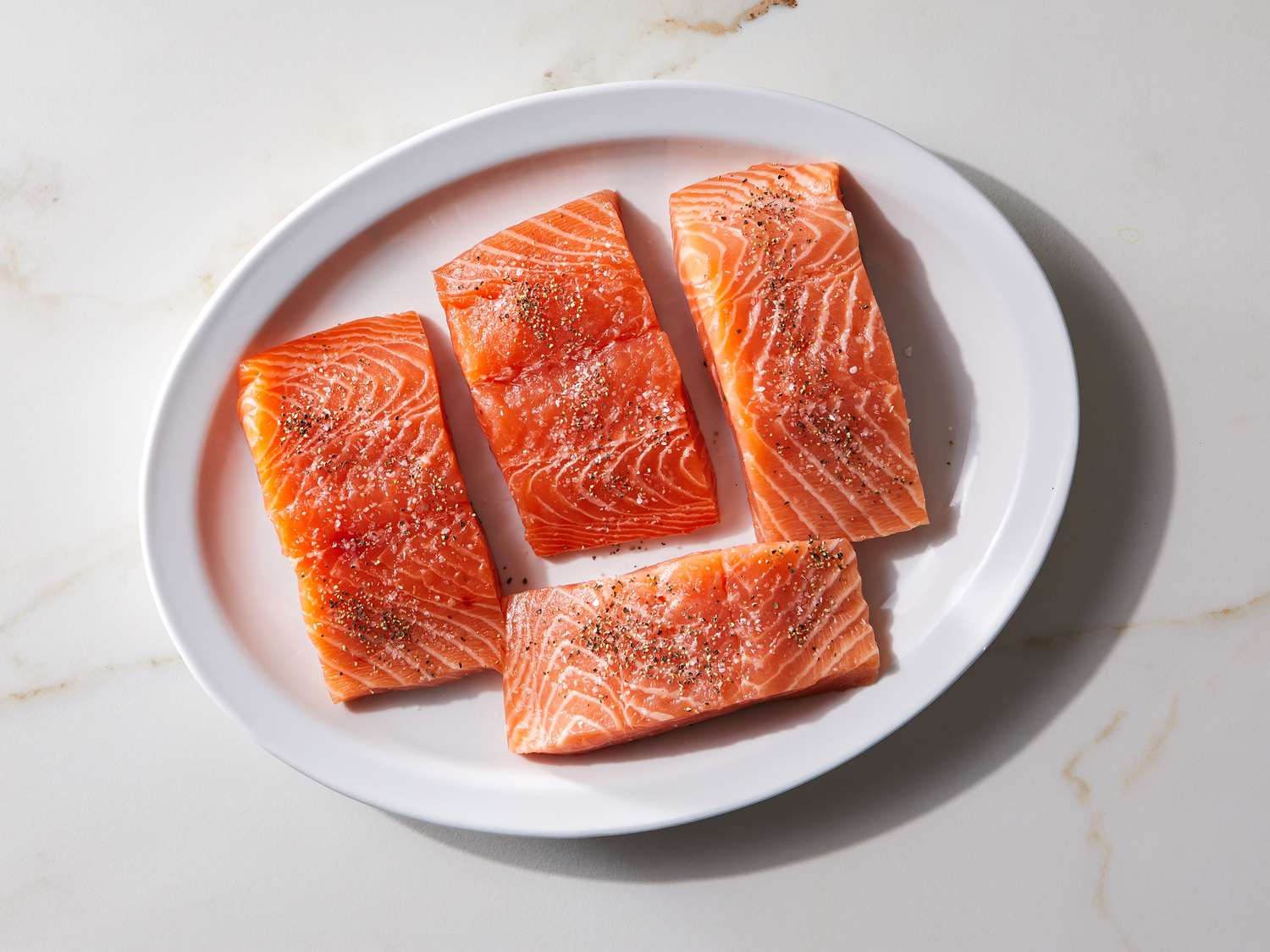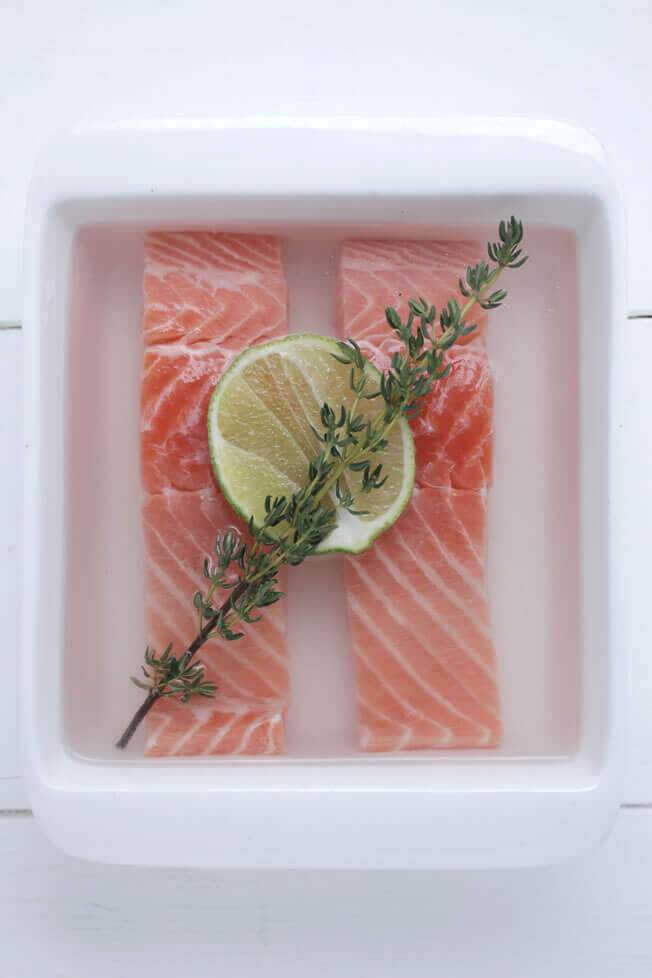Understanding The Freezing Process For Salmon

When it comes to freezing salmon, it’s important to understand the science behind it. Freezing helps preserve the quality and freshness of the fish by slowing down bacterial growth. The process involves lowering the temperature of the salmon below freezing point, which forms ice crystals within the flesh. These ice crystals can affect the texture and taste of the salmon if not frozen properly. Factors like packaging, storage conditions, and thawing methods also play a role in maintaining its quality.
The Science Behind Freezing Salmon
Freezing salmon involves lowering the temperature below freezing point to slow down bacterial growth and preserve its freshness. During the freezing process, ice crystals form within the flesh. These ice crystals can affect the texture and taste of the fish if not frozen properly. Understanding how to freeze salmon correctly is essential for maintaining its quality. Factors such as packaging, storage conditions, and thawing methods also play a role in preserving its flavor and texture.
Factors To Consider Before Freezing Salmon
Before freezing salmon, there are several important factors to consider. First, make sure the fish is fresh and of high quality. Avoid freezing salmon that has been sitting in the refrigerator for too long or that has started to smell off. Secondly, properly clean and fillet the fish before freezing to remove any scales or bones. Lastly, choose appropriate packaging materials such as airtight containers or freezer bags to prevent freezer burn and maintain the freshness of the salmon.
Can You Refreeze Salmon?

Yes, you can refreeze salmon, but there are important factors to consider. The safety and quality of the salmon may be compromised if it has been thawed for too long or improperly handled. It is recommended to refreeze salmon that has been blast frozen or frozen at home immediately after purchase or within two days of refrigeration. Proper packaging and storage methods, such as using airtight containers or freezer bags, can help maintain the freshness of the fish. When in doubt, it’s best to err on the side of caution and consume fresh salmon instead.
Safety Concerns And Guidelines
When refreezing salmon, it’s important to keep safety in mind. Follow these guidelines to ensure the quality and freshness of the fish. First, make sure the salmon has been properly stored and thawed in the refrigerator. Avoid refreezing salmon that has been left at room temperature for more than two hours. Additionally, pay attention to any signs of spoilage such as off smells or slimy texture. If in doubt, it’s best to discard the salmon rather than risk foodborne illness.
Impact On Taste And Texture
When salmon is refrozen, there can be some impact on its taste and texture. The repeated freeze-thaw cycles can lead to a loss of moisture in the fish, resulting in a drier texture. Additionally, the flavor may become slightly less vibrant after being frozen again. However, if the salmon is properly stored and thawed before refreezing, these changes may be minimal. It’s important to note that individual preferences may vary, and some people may not notice a significant difference in taste or texture when refreezing salmon.
Proper Storage And Thawing Techniques

To maintain the quality and safety of frozen salmon, proper storage and thawing techniques are crucial. When storing frozen salmon, it’s important to keep it in airtight packaging or freezer bags to prevent freezer burn. Store the fish in the coldest part of the freezer at a temperature below 0°F (-18°C). When thawing salmon, the best method is to transfer it from the freezer to the refrigerator and allow it to thaw slowly overnight. Avoid thawing salmon at room temperature or using hot water, as this can promote bacterial growth.
Best Practices For Storing Frozen Salmon
To ensure the quality and safety of frozen salmon, it’s important to follow best practices for storage. First, make sure the salmon is tightly sealed in airtight packaging or freezer bags to prevent freezer burn. Store the fish in the coldest part of the freezer, ideally at a temperature below 0°F (-18°C). This helps maintain its freshness and flavor. Additionally, label the packaging with the date of freezing to keep track of its shelf life. By following these practices, you can enjoy delicious frozen salmon for future meals.
Safe Thawing Methods For Salmon
When it comes to thawing frozen salmon, there are a few safe methods you can use. The best way is to thaw it in the refrigerator overnight. Place the sealed salmon in a shallow dish and let it defrost slowly in the fridge. Another option is to use cold water thawing. Seal the salmon tightly in a plastic bag and submerge it in cold water for about 30 minutes, changing the water every 30 minutes until fully thawed. Avoid using hot water or microwaving as these methods can lead to uneven thawing and compromise the quality of the fish.
Cooking Frozen Salmon

Cooking frozen salmon is a convenient option when you don’t have time to thaw it. Preparing frozen salmon is simple and can yield delicious results. To cook frozen salmon, preheat your oven to 425°F (220°C) and place the fish on a baking sheet lined with parchment paper. Bake for about 20-25 minutes or until the salmon reaches an internal temperature of 145°F (63°C). You can also grill or pan-sear frozen salmon by adjusting the cooking time accordingly. Remember to season the fish with herbs, spices, or marinades for added flavor.
Tips For Cooking Salmon Directly From The Freezer
When cooking salmon directly from the freezer, there are a few tips to keep in mind. First, preheat your oven to 425°F (220°C) and place the frozen salmon on a baking sheet lined with parchment paper. Cooking time may need to be extended by about 5-10 minutes to ensure thorough cooking. Alternatively, you can grill or pan-sear frozen salmon by adjusting the cooking time accordingly. Remember to season the fish with herbs, spices, or marinades for added flavor.
Avoiding Common Mistakes In Cooking Frozen Salmon
When it comes to cooking frozen salmon, there are some common mistakes that you should avoid. First, don’t thaw the fish before cooking it. This can lead to a loss of moisture and affect the texture of the salmon. Secondly, avoid overcooking the fish as it can become dry and less flavorful. It’s important to cook frozen salmon at a slightly lower temperature than fresh salmon to ensure even cooking throughout. Finally, be mindful of seasoning and marinating the fish properly to enhance its flavor while maintaining its natural taste.
Alternative Uses For Frozen Salmon

Frozen salmon can be utilized in various creative ways aside from traditional cooking methods. One option is to incorporate it into salads, adding a protein boost and a unique flavor profile. Another idea is to make salmon burgers or patties, combining the fish with breadcrumbs, herbs, and spices for a delicious meal. Additionally, frozen salmon can be used in pasta dishes such as creamy Alfredo or lemony linguine. Finally, consider using it in sushi rolls or poke bowls for a fresh and healthy twist. The possibilities are endless when it comes to utilizing frozen salmon in versatile recipes!
Creative Recipes Utilizing Frozen Salmon
When it comes to utilizing frozen salmon in creative recipes, the possibilities are endless. One option is to incorporate it into salads for a protein boost and unique flavor profile. Another idea is to make salmon burgers or patties by combining the fish with breadcrumbs, herbs, and spices. You can also use frozen salmon in pasta dishes like creamy Alfredo or lemony linguine. For a fresh and healthy twist, try using it in sushi rolls or poke bowls. Get creative and experiment with different flavors to make the most of your frozen salmon!
How To Incorporate Frozen Salmon In Different Dishes
Frozen salmon can be incorporated into a variety of delicious dishes. One idea is to make flavorful salmon tacos by seasoning the fish with spices like cumin and chili powder, then grilling or baking it until cooked through. Another option is to create a creamy salmon pasta by sautéing onions and garlic, adding frozen salmon chunks, and mixing in Alfredo sauce. For a light and refreshing meal, try using frozen salmon in a citrusy salad with mixed greens, oranges, and a tangy vinaigrette. The possibilities are endless when it comes to utilizing frozen salmon in different dishes!
Conclusion

In conclusion, understanding the freezing process for salmon is essential for safely storing and utilizing this delicious fish. While it is generally safe to refreeze salmon if thawed properly, it’s important to follow safety guidelines to avoid any foodborne illnesses. Freezing can slightly affect the taste and texture of salmon, but with proper storage and thawing techniques, the quality can be maintained. Additionally, frozen salmon can be used in a variety of creative dishes, adding convenience and versatility to your meals. Maximize the quality of your frozen salmon by following best practices and enjoy its flavors in different culinary creations.
Summary Of Key Points On Freezing And Refreezing Salmon
When it comes to freezing salmon, here are the key takeaways: make sure to freeze it promptly after purchase or preparation, as this helps maintain its quality. When thawing frozen salmon, do so in the refrigerator for safety reasons. Refreezing salmon is generally safe if done properly, but be cautious of potential bacterial growth and follow guidelines. Freezing may slightly affect the taste and texture of salmon, but with proper storage and thawing techniques, you can still enjoy its delicious flavors.
Tips For Maximizing The Quality Of Frozen Salmon
To ensure the best quality of frozen salmon, here are some valuable tips:
- Properly package and seal the salmon to prevent air exposure, which can lead to freezer burn.
- Label the packaging with the date of freezing to keep track of its freshness.
- Use a deep freeze or chest freezer for longer storage periods as they maintain a more consistent temperature.
- Avoid frequent thawing and refreezing, as this can affect the texture and flavor.
- Consume frozen salmon within three months for optimal taste and texture.
By following these tips, you can enjoy delicious and high-quality frozen salmon whenever you desire.
FAQ About Refreezing Salmon: Navigating The Freezing Process
Q: Can you refreeze salmon after it has been previously frozen?
A: It is not recommended to refreeze salmon once it has been thawed as this may affect its taste and texture.
Q: How should one properly freeze salmon?
A: To properly freeze salmon, make sure it is fresh, clean, and dry before packaging it in an airtight container or freezer-safe bag to prevent freezer burn.
Q: Is there a way to extend the shelf life of salmon in the freezer?
A: Yes, you can extend the shelf life of salmon in the freezer by properly wrapping it in plastic wrap or aluminum foil before placing it in a resealable freezer bag.
Q: Can frozen salmon be safely stored in the freezer for an extended period?
A: Frozen salmon can be safely stored in the freezer for up to 3 months. It is best to consume it within this time frame for optimal taste and quality.
Q: How can one tell if frozen salmon has gone bad?
A: If frozen salmon develops an off smell, unusual color, or freezer burn, it is best to discard it as it may have gone bad.
Q: Is it safe to thaw frozen salmon and then refreeze it?
A: Thawed salmon should not be refrozen since it can lead to bacterial contamination and affect the quality of the fish. It is best to cook the salmon after thawing instead.

Welcome to Braddock Bay Tavern & Grill, where history, delicious cuisine, and stunning views come together to create an unforgettable experience. Our restaurant, situated on the picturesque edge of Lake Ontario, has a rich history that adds a unique charm to your dining experience. The roots of our establishment can be traced back to 1865, when it was first constructed as an icehouse. Over the years, it transformed into the historic Braddock Bay Hotel, becoming a beloved local landmark. Today, we take pride in preserving the building’s historical beauty, ensuring that every visit to our restaurant is a journey through time.